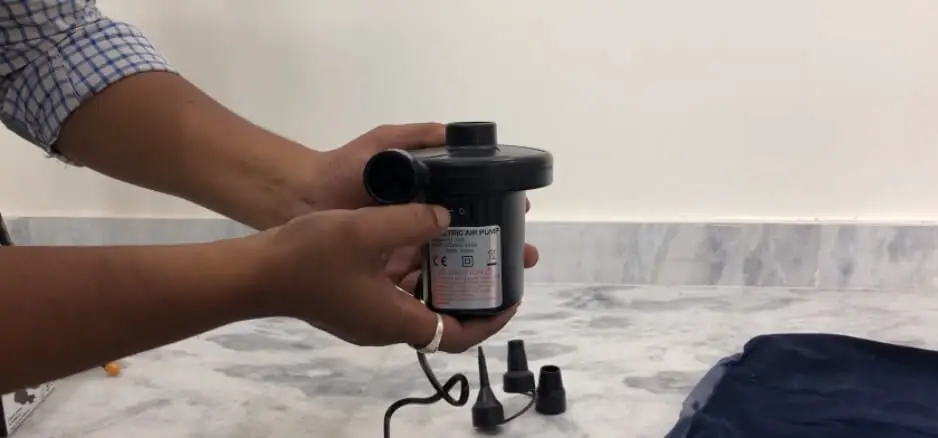As an Amazon Associate I earn from qualifying purchases.
Ever wondered how many watts does an air mattress pump use? The energy efficiency of your inflatable haven is a key consideration for both environmental and practical reasons. In this guide, we’ll unravel the mystery behind air mattress pump wattage, shedding light on the factors that influence energy consumption. Whether you’re a camping enthusiast or just curious about your home setup, understanding the watts used by an air mattress pump is essential for making informed and eco-friendly choices. Let’s dive into the world of inflatable comfort and energy awareness.
Understanding Air Mattress Pumps: Navigating Types, Wattage, and Efficiency
Air mattress pumps play a crucial role in inflating and deflating air mattresses, offering convenience and comfort for both indoor and outdoor use. Here’s a comprehensive exploration of the various aspects of air mattress pumps:
A. Overview of Different Types of Air Mattress Pumps:
Selecting the appropriate pump is essential for properly inflating your air mattress. many demands and interests are catered for by the many types of air mattress pumps that are available. Manual pumps offer a hands-on, no-power-required approach, ideal for camping or situations without electricity. Electric pumps, on the other hand, come in two main types: external and integrated. While integrated pumps are conveniently integrated into the mattress to provide hassle-free inflation, external pumps are discrete devices that attach to the mattress.
B. Importance of Wattage in Evaluating Pump Efficiency:
An electric air mattress pump’s effectiveness is mostly dependent on its wattage. It measures the rate at which the pump consumes electrical power. Higher wattage generally indicates faster inflation, making it a crucial factor for those seeking a quick and convenient setup. On the other hand, too high wattage could cause overinflation or possibly put stress on the mattress, so it’s important to find a balance.
C. Impact of Pump Wattage on Electricity Consumption:
Understanding the correlation between pump wattage and electricity consumption is essential for both environmental and cost considerations. Higher wattage pumps consume more electricity, potentially leading to increased energy bills. However, they also offer quicker inflation times. Conversely, lower wattage pumps may take longer to inflate but are more energy-efficient. Users must weigh their priorities, considering both speed and energy conservation, to choose a pump that aligns with their preferences and values.
In essence, comprehending the diverse types of air mattress pumps, recognizing the significance of wattage in pump efficiency, and understanding the impact of pump wattage on electricity consumption empower consumers to make informed decisions. Whether opting for the convenience of high-wattage pumps or the eco-friendly approach of lower wattage alternatives, aligning your choice with your specific needs ensures a seamless and personalized air mattress inflation experience.
Factors Influencing Wattage in Air Mattress Pumps: Unraveling the Dynamics
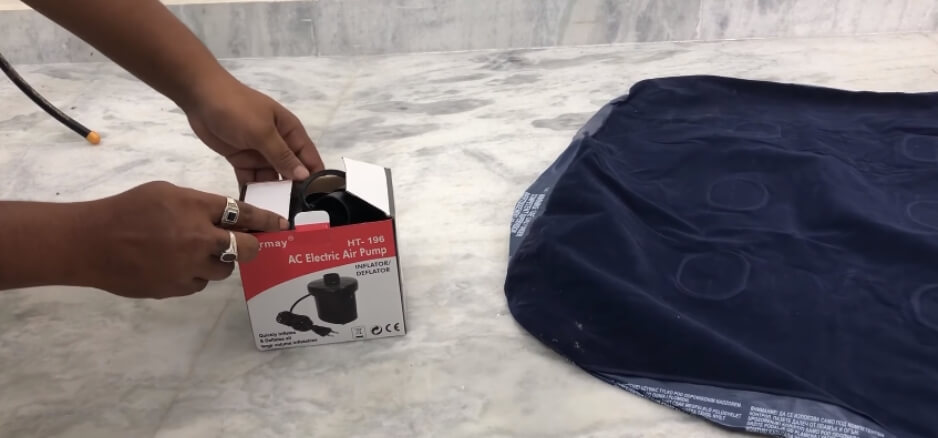
A number of factors affect the wattage of air mattress pumps, all of which have an impact on the pump’s overall performance and energy efficiency. Let’s delve into these influential factors:
A. Pump Size and Power Rating:
The size and power rating of the pump are fundamental determinants of its wattage. Larger pumps designed for inflating queen or king-sized mattresses typically have higher power ratings, translating to increased wattage. The power rating is indicative of the pump’s motor strength and its ability to generate sufficient airflow for efficient inflation. It’s essential for consumers to consider the intended use and mattress size when selecting a pump, ensuring compatibility with their specific requirements.
B. Inflation Speed and Efficiency:
The speed at which an air mattress pump can inflate a mattress is closely tied to its wattage. Higher wattage pumps generally boast faster inflation speeds, contributing to enhanced efficiency. The design and technology incorporated into the pump’s motor play a pivotal role in dictating how quickly it can fill the mattress with air. Balancing the need for rapid inflation with considerations like noise levels and power consumption allows users to optimize their experience with the pump.
C. Battery-Operated vs. Electric Pumps:
The choice between battery-operated and electric pumps significantly impacts wattage considerations. Battery-operated pumps, often favored for their portability, tend to have lower wattage compared to electric counterparts. While electric pumps, reliant on a power outlet, can offer higher wattage for increased performance. The choice between the two is influenced by variables including the desired inflation rate, the mobility requirement, and the availability of power sources.
Understanding the intricate interplay of these factors provides consumers with valuable insights when selecting an air mattress pump that aligns with their preferences and practical considerations. By assessing pump size, power rating, inflation speed, and the choice between battery-operated and electric models, individuals can make informed decisions, ensuring their air mattress inflating experience meets both efficiency and convenience standards.
Calculating Wattage Consumption in Air Mattress Pumps: A Practical Guide
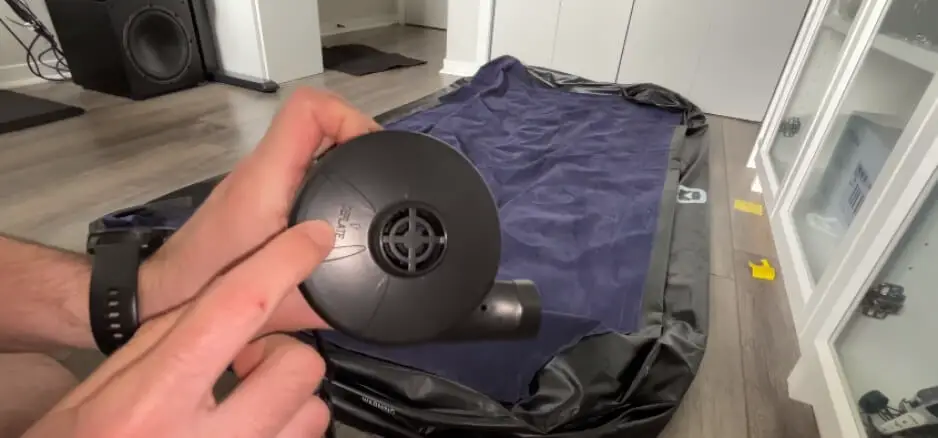
Determining the wattage consumption of an air mattress pump is a crucial step in managing energy usage and estimating associated costs. Here’s a comprehensive guide on how to calculate and understand wattage consumption:
A. Reading Pump Specifications:
The key to calculating wattage consumption begins with a careful examination of the pump’s specifications. Manufacturers typically provide information on the pump’s power rating, often expressed in watts. The product instructions, the package, or the pump itself all provide this information. Pay attention to details such as voltage requirements and current draw, as these contribute to the overall wattage.
B. Understanding Power Requirements for Different Pump Models:
Different air mattress pump models come with varying power requirements. Understanding the power needs of your specific pump model is essential for accurate calculations. Electric pumps, for instance, may have higher wattage for faster inflation, while battery-operated pumps tend to be more conservative in their power consumption. Consider the intended use, desired inflation speed, and the convenience of power sources when assessing power requirements.
C. Estimating Energy Costs Based on Wattage:
Once armed with the pump’s wattage information, estimating energy costs becomes a straightforward process. Most electricity providers charge per kilowatt-hour (kWh). To calculate the cost of operating the pump, multiply the pump’s wattage by the number of hours it runs, then divide by 1000 to convert to kilowatt-hours. Finally, multiply the outcome by the amount your power bill’s cost per kilowatt-hour. This formula (Wattage × Hours ÷ 1000 × Cost per kWh) provides an estimate of the energy costs associated with operating the air mattress pump.
By navigating through these steps and considering factors such as pump specifications, power requirements, and energy costs, users can gain a comprehensive understanding of the wattage consumption of their air mattress pump. This knowledge empowers individuals to make informed decisions, balancing performance expectations with energy efficiency and cost considerations for an optimal user experience.
Energy-Efficient Alternatives in Air Mattress Pumps: Striking the Balance Between Performance and Conservation
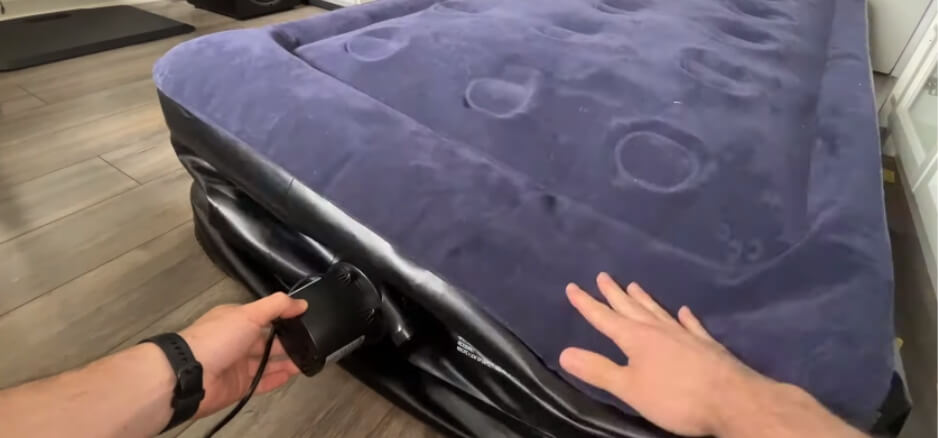
Air mattress pumps are no different from other industries as the need for environmentally and energy-friendly solutions keeps growing. Exploring alternatives that prioritize lower wattage and sustainability can be a rewarding endeavor. Here’s a comprehensive exploration of energy-efficient alternatives in the realm of air mattress pumps:
A. Exploring Low-Wattage Air Mattress Pumps:
Manufacturers have responded to the growing emphasis on energy conservation by introducing low-wattage air mattress pumps. These pumps are made to run smoothly and use the least amount of energy possible. Exploring the market for models with lower wattage ratings allows consumers to make choices aligned with their sustainability goals without compromising on the pump’s ability to deliver a swift and effective inflation process.
B. Considering Eco-Friendly and Energy-Efficient Options:
Beyond wattage considerations, eco-friendly and energy-efficient options are gaining prominence. Some air mattress pumps are designed with features that contribute to a greener footprint. This may include components made from sustainable materials, energy-efficient motors, or even compatibility with alternative power sources such as solar or rechargeable batteries. Taking these into account is in line with the larger trend of sustainable consumer decisions as well as supporting environmental projects.
C. Balancing Performance and Energy Conservation:
An essential component of choosing an energy-efficient air mattress pump is striking a balance between performance and energy saving. While lower wattage is desirable for reducing electricity consumption, users must ensure that the pump meets their inflation needs efficiently. Assessing the pump’s specifications, including its inflation speed, motor efficiency, and overall performance, ensures that the chosen alternative not only conserves energy but also delivers on practical expectations.
Embracing energy-efficient alternatives in air mattress pumps is a step towards creating a more sustainable and environmentally conscious living space. By exploring low-wattage options, considering eco-friendly features, and maintaining a balance between performance and conservation, consumers can contribute to a greener future while enjoying the convenience of air mattress inflation. The availability of energy-efficient substitutes offers a wide range of options for those seeking comfort and environmental responsibility as the market continues to change.
Practical Tips for Wattage Management in Air Mattress Pump Usage: Enhancing Efficiency and Sustainability
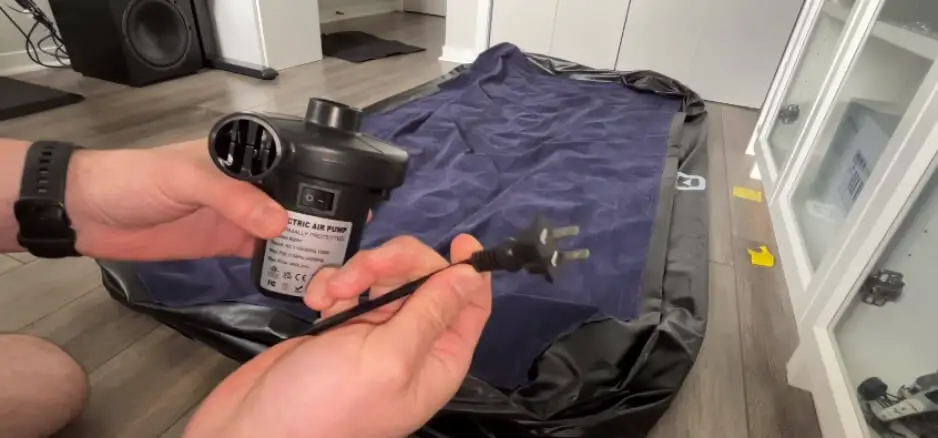
Effectively managing the wattage of an air mattress pump involves a combination of proper maintenance, mindful electricity usage, and incorporating energy-saving practices. Here are practical tips to help users optimize pump performance while maintaining a focus on energy efficiency:
A. Proper Maintenance to Optimize Pump Performance:
Regular maintenance is key to ensuring that an air mattress pump operates at its peak efficiency. This entails checking and cleaning every portion of the pump, including the air intake vents and engine. A buildup of dust and debris can impede airflow, put stress on the motor, and increase power usage. Keeping the pump in optimal condition through routine maintenance promotes smoother operation and reduces unnecessary energy expenditure.
B. Monitoring Electricity Usage During Inflation:
Actively monitoring electricity usage during the inflation process provides valuable insights into the pump’s performance and efficiency. Observing the wattage drawn by the pump in real-time allows users to gauge its energy consumption and make informed decisions. If a pump consistently operates at higher wattage levels, it may be an indicator of potential issues or inefficiencies. Monitoring electricity usage serves as a proactive measure to address any anomalies promptly and ensure that the pump operates within optimal energy parameters.
C. Incorporating Energy-Saving Practices into Air Mattress Pump Usage:
Adopting energy-saving practices while using an air mattress pump contributes to sustainable and responsible usage. In order to reduce standby power usage, this also entails disconnecting the pump while not in use. Additionally, leveraging natural ventilation and daylight during the inflation process reduces reliance on artificial lighting and ventilation systems. Simple habits such as fully charging battery-operated pumps in advance and using them strategically further enhance energy efficiency.
By integrating these practical tips into the routine use and maintenance of air mattress pumps, users can actively manage wattage and contribute to both efficiency and sustainability. The synergy of proper maintenance, real-time monitoring, and energy-saving practices empowers individuals to enjoy the convenience of air mattress inflation while minimizing their environmental impact. As conscientious consumers embrace these practices, the journey towards a more energy-efficient and eco-friendly lifestyle becomes an attainable and rewarding endeavor.
Conclusion
In the realm of air mattress pumps, understanding wattage is the key to efficient and mindful usage. Users may successfully balance performance and energy saving by understanding the details of watts. Whether opting for low-wattage alternatives or implementing practical tips for wattage management, the goal is clear – achieving optimal inflation with a keen eye on sustainability. As the market continues to offer diverse choices, embracing knowledge about wattage empowers users to make informed decisions, fostering a comfortable and eco-conscious lifestyle.
Frequently Asked Questions
Q1. How many watts does an air mattress pump use for a different model?
Answer: The wattage of air mattress pumps varies between models. To find out the specific wattage for your pump, check the product manual or look up the specifications on the manufacturer’s website. Different pump models come with different power requirements, so understanding the wattage is essential for efficient and informed usage.
Q2. How do I find out how many watts my air mattress pump uses?
Answer: Examine the product handbook or visit the manufacturer’s website to review the pump specs. Most pumps provide wattage details for informed energy consumption.
Q3. Does the size of my air mattress affect the pump's wattage usage?
Answer: Yes, larger mattresses may require more powerful pumps, potentially consuming more watts. It’s crucial to match the pump’s capacity with the size of your air mattress
Q4. Are battery-operated air mattress pumps more energy-efficient?
Answer: Battery-operated pumps can be energy-efficient, but the wattage depends on the pump model. Check the specifications to understand the energy consumption of your specific battery-powered pump.
Q5. Can using a higher-wattage pump inflate my mattress faster?
Answer: While higher wattage can contribute to faster inflation, it’s essential to balance speed with energy consumption. Consider your priorities for both efficiency and energy conservation.
Q6. Are there energy-saving tips for using air mattress pumps?
Answer: Yes, maintaining your pump and avoiding over-inflation can optimize energy usage. Additionally, investing in a pump with adjustable settings allows you to control the inflation speed and wattage consumption.
As an Amazon Associate I earn from qualifying purchases.

